Ice cream is a beloved frozen treat with a compelling history and fascinating science. From its ancient origins to contemporary varieties, ice cream has evolved into a diverse and globally cherished dessert. This article explores the origin of ice cream, the science behind its creation, rare flavors, and the reasons people enjoy it.
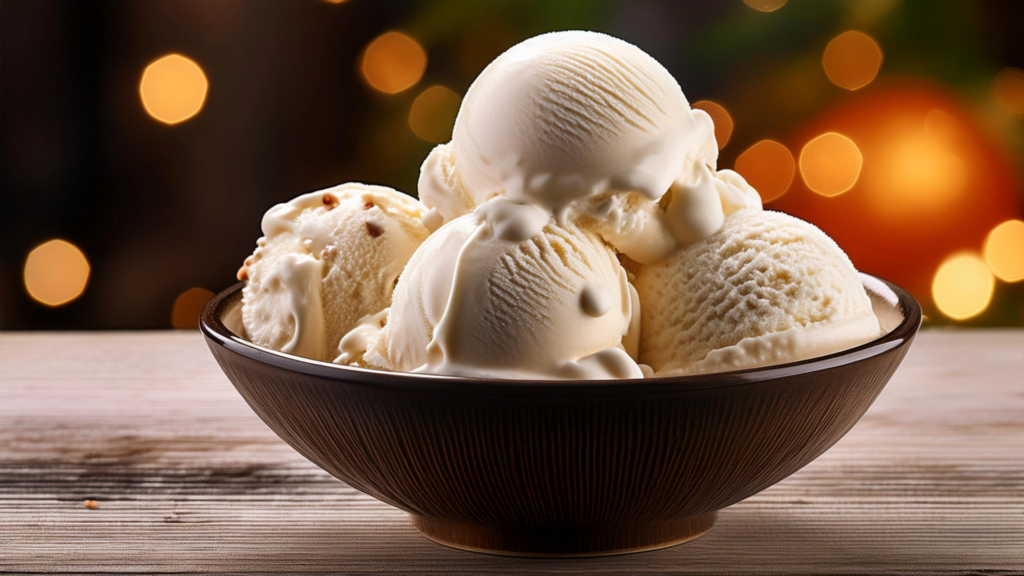
Origin of Ice Cream
The furthest origin of ice cream can be traced back to ancient civilizations in colder climates. Historical records indicate that primitive versions of ice cream were made from snow and ice mixed with fruit juices and honey.

Ancient China
The earliest known reference to a frozen dessert comes from China during the Tang Dynasty (618-907 AD). The Chinese made a frozen concoction by mixing milk and rice with ice. Many attribute China to the origin of ice cream because of this creative early spark of innovation.
Ancient Rome
The Romans are also credited with creating early frozen desserts. They used snow brought from mountains and mixed it with honey and fruit. The Roman Emperor Nero reportedly had ice and snow brought to Rome to create chilled desserts.
Middle Ages
In medieval Persia, a similar frozen treat was made from sweetened rosewater, saffron, and ice. These early versions of ice cream were still quite different from the creamy, smooth dessert we know today.
16th Century Europe
The modern form of ice cream began to take shape in Europe. Italian aristocrats enjoyed a version made from milk, cream, and sugar, often flavored with fruits and nuts. The art of making ice cream spread throughout Europe, eventually reaching England and France. So, for the early origin of ice cream that we know today, it begins in the 16th century.
17th and 18th Century
Ice cream recipes began to appear in European cookbooks. In 1686, the French chef Nicolas Audiger published a recipe for a “creme glacée,” a precursor to modern ice cream. The treat became popular among European nobility and was eventually introduced to America by early European settlers.
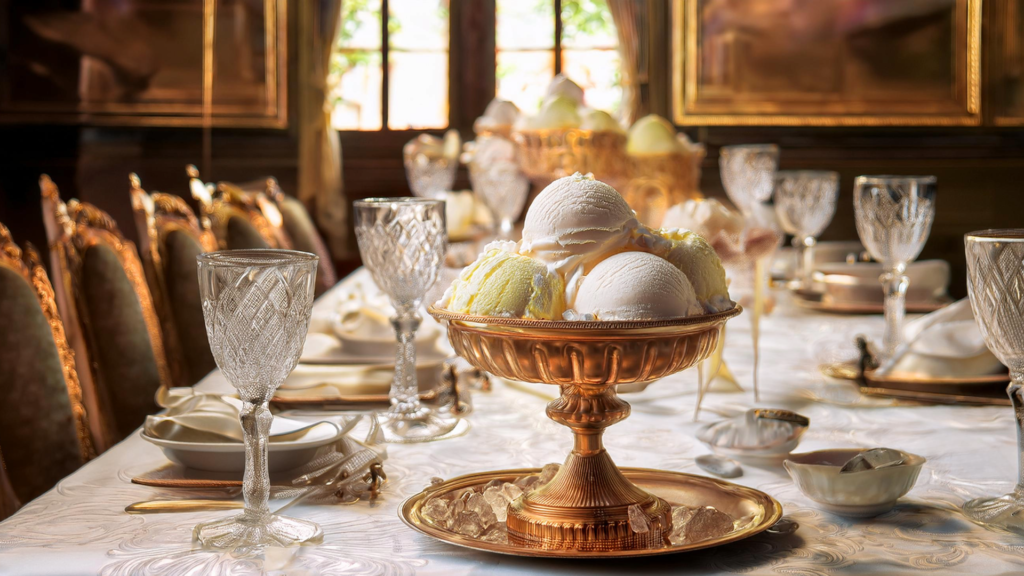
The Science of Ice Cream
The science behind ice cream involves understanding how ingredients interact to create a smooth and creamy texture. The key components of ice cream are:
Fat contributes to the creamy texture of ice cream. It comes from cream or milk and helps to create a smooth mouthfeel.
Air is incorporated into the ice cream during churning. This process, known as overrun, affects the texture and volume of the final product. The amount of air incorporated influences the creaminess and lightness of the ice cream.
Sugar not only sweetens the ice cream but also lowers the freezing point of the mixture, preventing it from becoming too hard. It also contributes to the smooth texture by reducing ice crystal formation.
Stabilizers and Emulsifiers help to maintain the texture and consistency of ice cream. Stabilizers prevent the formation of large ice crystals, while emulsifiers help to blend fat and water.
Flavorings can include natural ingredients like vanilla, chocolate, or fruit purees, as well as artificial flavors. These are added to enhance the taste of the ice cream.
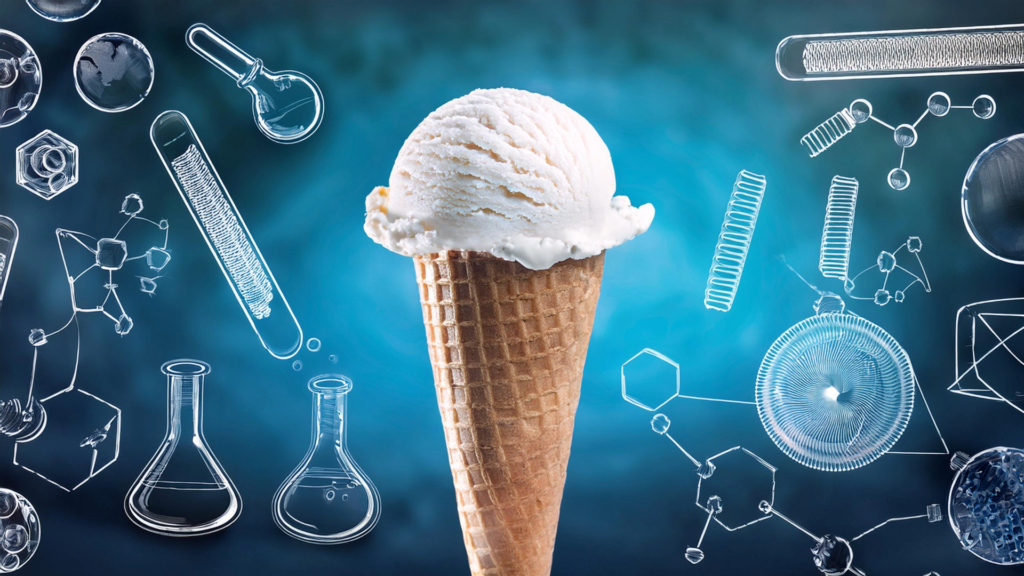
How Ice Cream is Made
The process of making ice cream involves several key steps:
1] Mixing: The base mixture is prepared by combining milk, cream, sugar, and any stabilizers or emulsifiers. Flavorings can be added at this stage.
2] Pasteurization: The mixture is heated to kill any harmful bacteria and ensure that the ingredients are fully integrated. This step is crucial for food safety.
3] Homogenization: The mixture is then homogenized to break down fat molecules and create a smooth, uniform texture.
4] Cooling: After pasteurization, the mixture is cooled rapidly to prepare it for freezing.
5] Churning: The cooled mixture is churned in an ice cream maker. Churning incorporates air into the mixture and helps to break up ice crystals, creating a smooth texture. Ice cream salt is added to ice outside the interior bin with the ice cream. The salt works to lower the freeze point of ice and to create a colder temperature. Ice cream salt helps improve ice cream texture smoothness (prevents ice crystals in the ice cream).
6] Freezing: The ice cream is then frozen at a low temperature to solidify it and achieve the desired consistency.
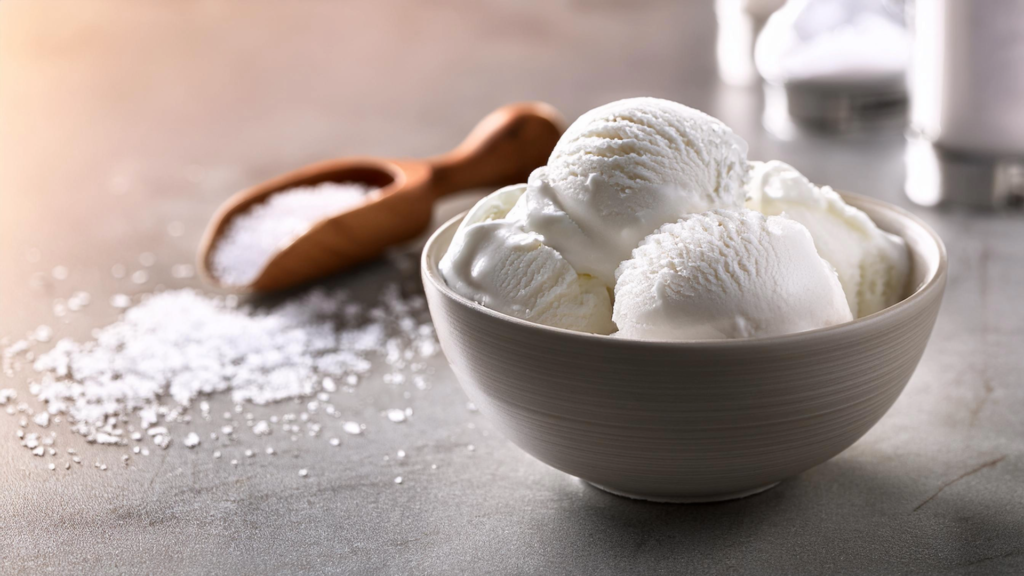
Making Ice Cream at Home
Making ice cream at home has become increasingly popular thanks to the availability of home ice cream makers and simpler recipes. Here’s why people enjoy making ice cream at home:
Homemade ice cream allows for complete control over the ingredients and flavors. People can experiment with unique flavors, adjust sweetness levels, and use natural ingredients.
Making ice cream at home ensures that only high-quality ingredients are used, avoiding artificial additives or preservatives.
The process of making ice cream can be a fun and creative activity for families or individuals. It provides an opportunity to explore culinary skills and enjoy a rewarding treat.
Homemade ice cream can be more cost-effective than store-bought versions, especially when making large quantities or using expensive ingredients.
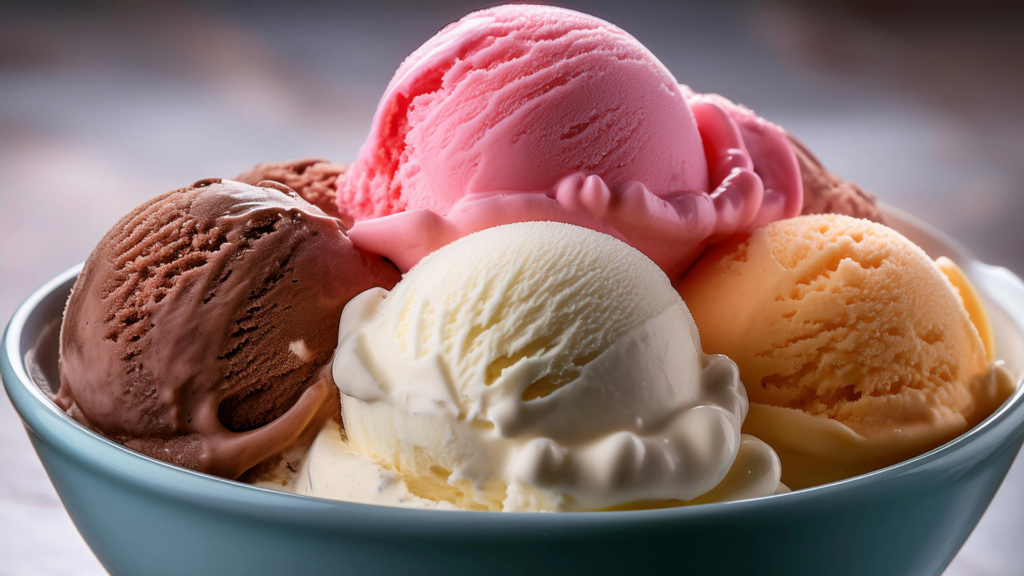
Rare Ice Cream Flavors
The world of ice cream is filled with inventive and unusual flavors. Here are some rare ice cream flavors that push the boundaries of traditional taste:
Black Sesame: Popular in Asian cuisine, black sesame ice cream has a unique nutty flavor and striking dark color.
Caviar: Ice cream made with caviar offers a luxurious combination of creamy sweetness and briny richness.
Cheese and Crackers: Some innovative ice cream makers have combined the flavors of cheese and crackers to create a savory-sweet treat.
Avocado: Avocado ice cream provides a creamy texture and a subtle, nutty flavor, often enhanced with lime or honey.
Olive Oil: Olive oil ice cream offers a smooth, rich texture and a distinctive fruity flavor, often paired with sea salt.

Ice Cream Salt vs. Regular Salt
When making ice cream at home, especially using a traditional ice cream maker, salt plays a crucial role in the freezing process. The primary difference between ice cream salt and regular salt lies in their composition and purpose:
Ice Cream Salt (Rock Salt): Ice cream salt is typically coarse and does not dissolve easily in water. It is used to lower the freezing point of the ice surrounding the ice cream canister. This allows the ice cream mixture to freeze more effectively. Rock salt is preferred because it can withstand lower temperatures and facilitates the freezing process.
Regular Salt: Regular table salt is fine and dissolves easily in water. While it can be used in a pinch, it is less effective than ice cream salt for the freezing process. The fine grains of regular salt dissolve too quickly and may not lower the temperature as efficiently.

Ice cream is a delightful and complex treat with a fascinating history and science behind its creation. From the ancient origin of ice cream to modern production techniques, this desert continues to evolve and captivate people worldwide. Whether enjoyed in traditional flavors or experimental varieties, ice cream remains a symbol of joy, bringing people together for a sweet experience.